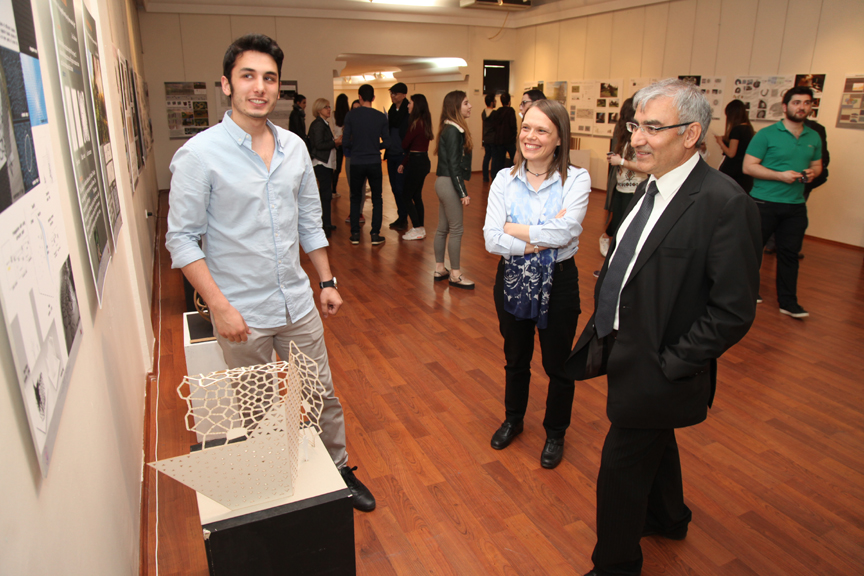 Last week, students in the Department of Architecture’s Parametric Design Studio course exhibited their works in the FADA Exhibition Hall. Parametric design refers to the process of modeling the relationships between design parameters algorithmically. Unlike conventional design media, which focus only on the representation of geometry, parametric design tools can be used to model a wide range of design information. This enables the creation of complex forms and the production of their prototypes with digital fabrication tools such as 3D printers, laser cutters and CNC routers. Moreover, the environmental performance of a design is improved when related criteria are integrated into the design process.
Last week, students in the Department of Architecture’s Parametric Design Studio course exhibited their works in the FADA Exhibition Hall. Parametric design refers to the process of modeling the relationships between design parameters algorithmically. Unlike conventional design media, which focus only on the representation of geometry, parametric design tools can be used to model a wide range of design information. This enables the creation of complex forms and the production of their prototypes with digital fabrication tools such as 3D printers, laser cutters and CNC routers. Moreover, the environmental performance of a design is improved when related criteria are integrated into the design process.
The main project presented in the exhibition, “Parametric Sk[in] Light,” called for the creation of parametric skins that create playful experiences with light. The spring 2017 Parametric Design Studio class, led by Asst. Prof. Şule Taşlı Pektaş, developed their own scenarios and proposals for the implementation of their ideas in the built environment, exploring the opportunities of variation, responsiveness and materialization offered by digital fabrication. The exhibition demonstrated the future architects’ skills in using cutting-edge technology to design creative, aesthetic and functional spaces.
